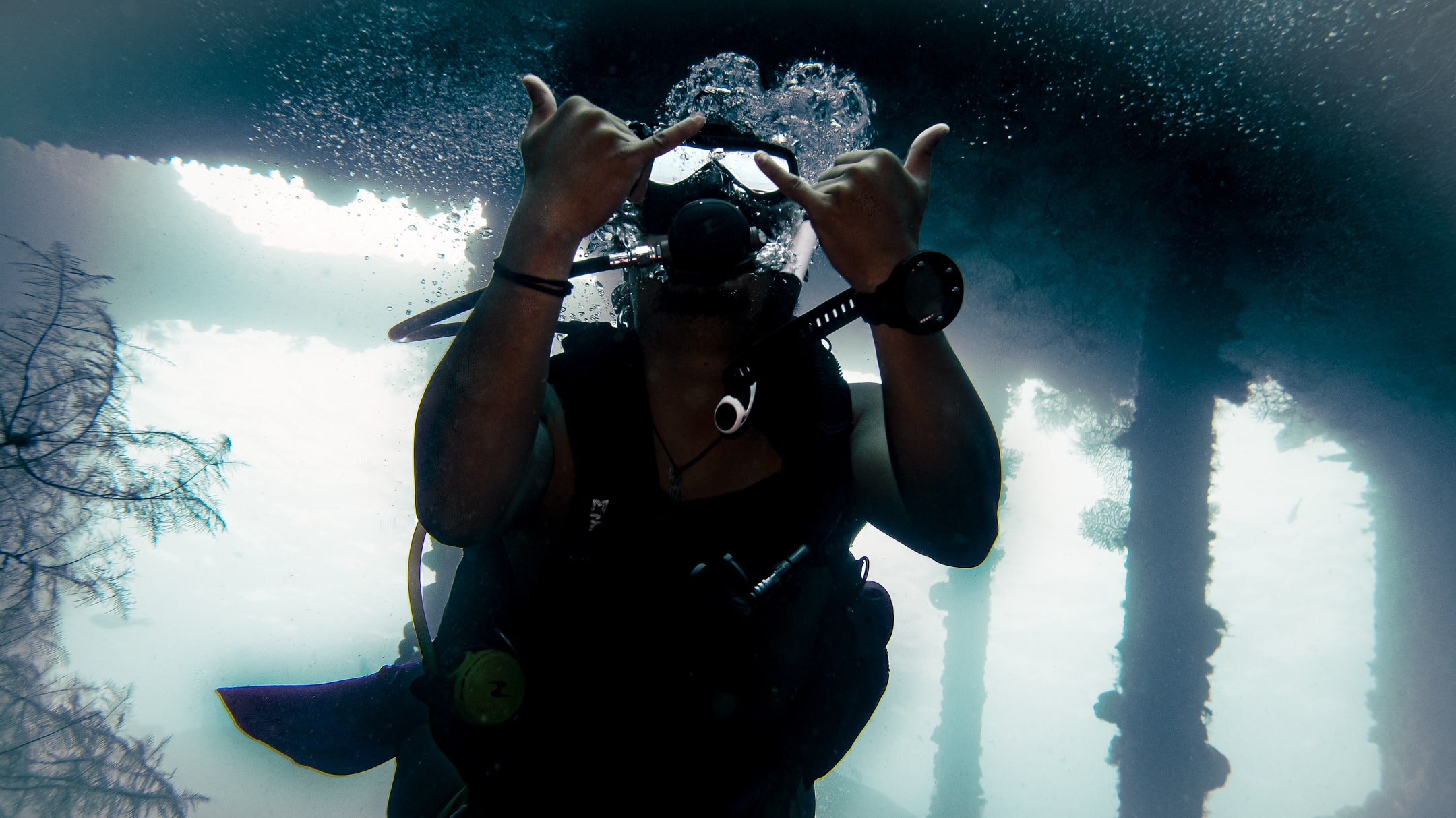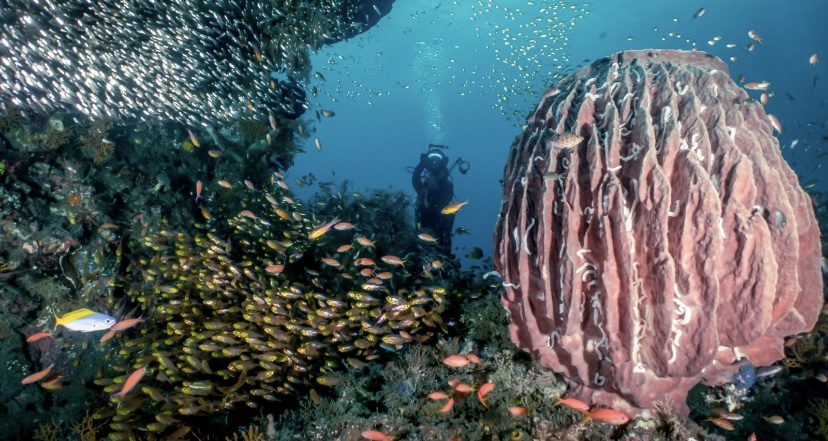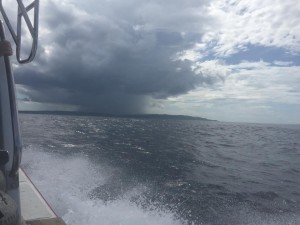Mantas are probably some of the most fascinating creatures a diver can encounter. However and very sadly their survival is highly threatened. There is a ray of hope for these majestic creatures though, since they have been listed in CITES Appendix II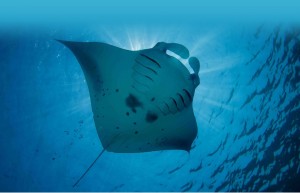 in September 2014. CITES (the Convention on International Trade in Endangered Species of Wild Fauna and Flora) is an international agreement between governments. Its aim is to ensure that international trade in specimens of wild animals and plants does not threaten their survival. Appendix II lists animals and plants that are not immediately threatened with extinction but will become so unless their trade is closely monitored. Hopefully this will help to protect the Mantas. Indonesia went one step further and protected the Manta Ray population in all their waters, creating the biggest Manta Ray sanctuary in the world.
in September 2014. CITES (the Convention on International Trade in Endangered Species of Wild Fauna and Flora) is an international agreement between governments. Its aim is to ensure that international trade in specimens of wild animals and plants does not threaten their survival. Appendix II lists animals and plants that are not immediately threatened with extinction but will become so unless their trade is closely monitored. Hopefully this will help to protect the Mantas. Indonesia went one step further and protected the Manta Ray population in all their waters, creating the biggest Manta Ray sanctuary in the world.
So why are Mantas so close to extinction? There are different threats. Pollution in the water, especially in the rainy season a lot of plastic waste washes into the sea and usually is brought to the same places as the p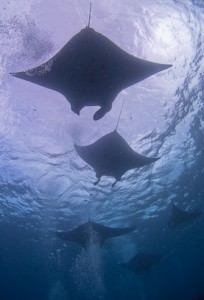 lankton by the currents. So at their feeding stations there is much plastic floating around, bigger pieces that they get in their mouth they can simply spit back out.
lankton by the currents. So at their feeding stations there is much plastic floating around, bigger pieces that they get in their mouth they can simply spit back out.
But unfortunately with time and sun plastic degrades and breaks down in tiny little pieces called micro plastic, which is small enough to be eaten even by plankton. And this is already happening. So when Mantas and other filter feeders eat plankton they will already ingest plastic. Plastic is unfortunately not the most natural and healthy food, I would not want to eat plastic with my sandwich to be honest.
And this is a huge problem here, Indonesia is the second biggest plastic waste producer in the world. Each and every one of us can do a little something about it though. When you go shopping, remember to bring a re-usable bag, maybe buy a reusable water bottle instead of a plastic one and then, do you really need a plastic straw in your drink?
Another threat to Manta Rays is unregulated tourism. Unfortunately some guests that go snorkeling or diving with the Mantas don’t get briefed properly. So people try to touch them or chase them (believe me the Manta will always be faster) or touch and damage coral. Every animal under water has a mucus layer that protects them from infection.
So every time a diver or snorkeler touches a fish or a coral they take away from this mucus layer and the animal is more prone to get infected. On dive sites that have many divers you will be able to see some of the damage to coral, if you look closely. Mantas that are disturbed exceedingly might leave the area and find a quieter place to live. Also when the coral is damaged the fish that clean the Mantas will leave giving the Rays no incentive of going there as well as taking away a very important part of their daily routine. Mantas get cleaned up to 8 hours every day. So please control your buoyancy and don’t touch any animals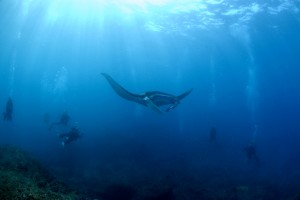 underwater as tempting as it might be.
underwater as tempting as it might be.
The biggest threat for the Manta Rays is the unregulated fishery. Long time the Mantas were not targeted by fishermen or only in isolated areas in small numbers. But with other fish especially sharks on the decline the fishermen started to target the Mantas and in just a few short years regional populations have been severely depleted or already largely disappeared. They are targeted for their meat, but much more profitable are their gills. These are nowadays used in Traditional Chinese Medicine and they claim that the gills can heal a whole variety of Illnesses. From cancer to chicken pox to skin ailments and it is supposed to even help couples with fertility problems. Many practitioners of Traditional Chinese Medicine deny though that the gills are effective. But it seems that traders put in a lot of effort to be able to sell the gills profitable. Apparently direct to consumer marketing increases the demand.
Fortunately people have realised that Mantas bring much more money alive than dead. Each Manta is estimated to bring USD 1 Million in tourist revenues over its lifetime as opposed to around USD 500 dead. This was one of the arguments that made Indonesia take the step to protect the Manta Rays in its waters. So we will see what the future holds for these majestic creatures, hopefully their numbers will once again rise and we can all enjoy their presence.

